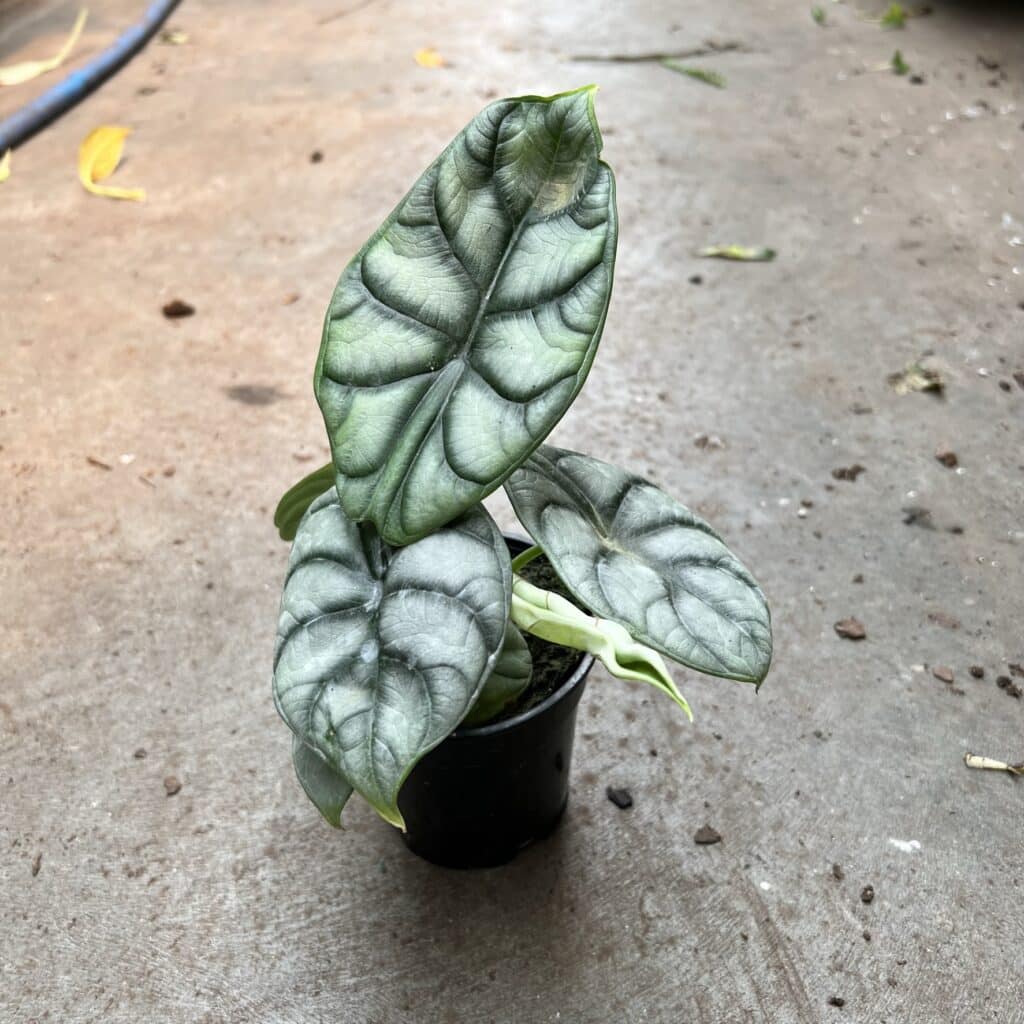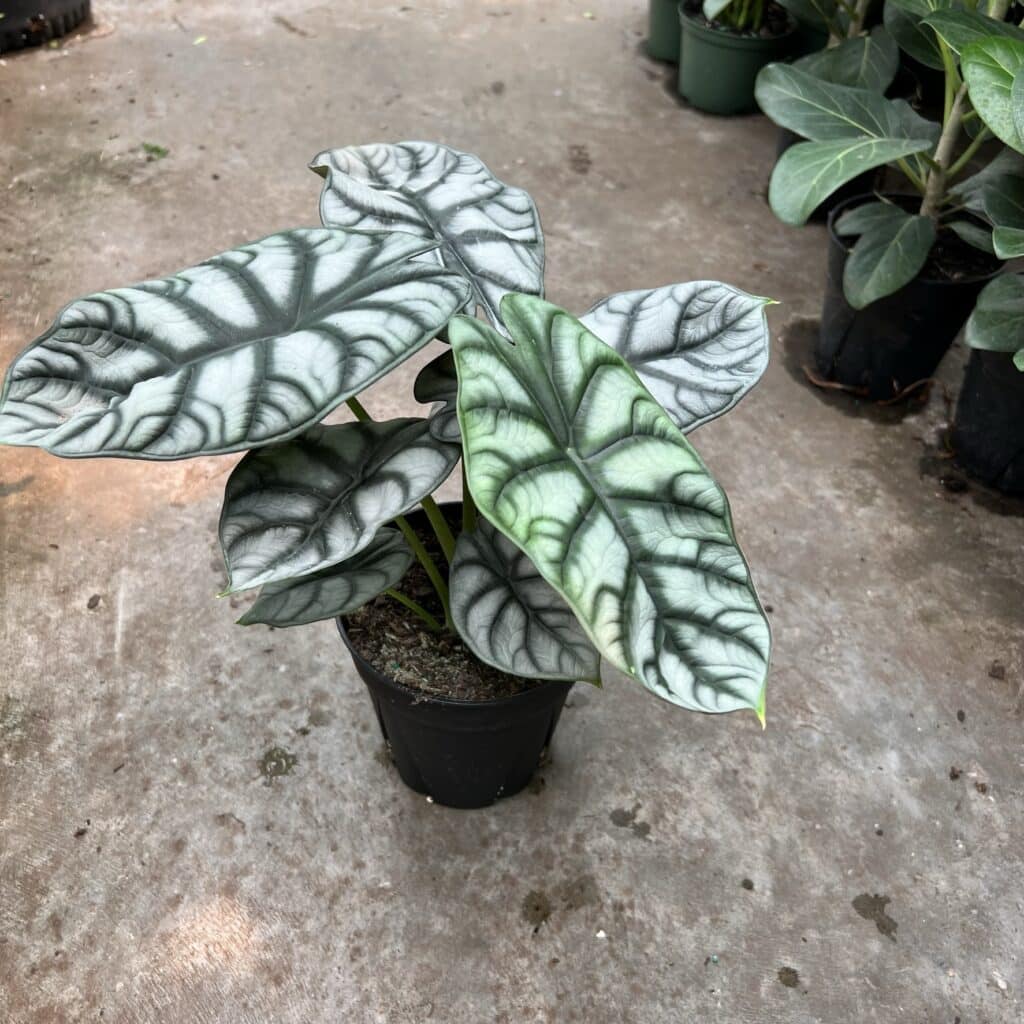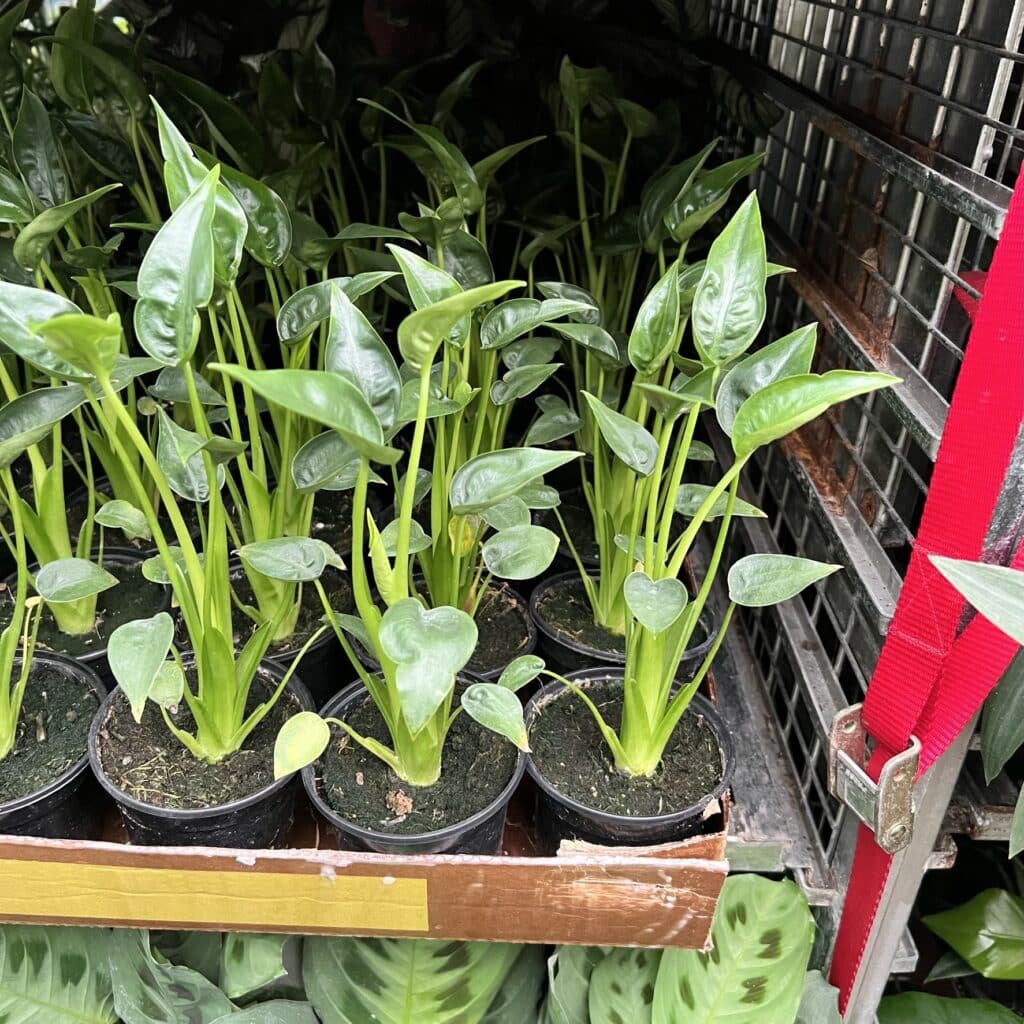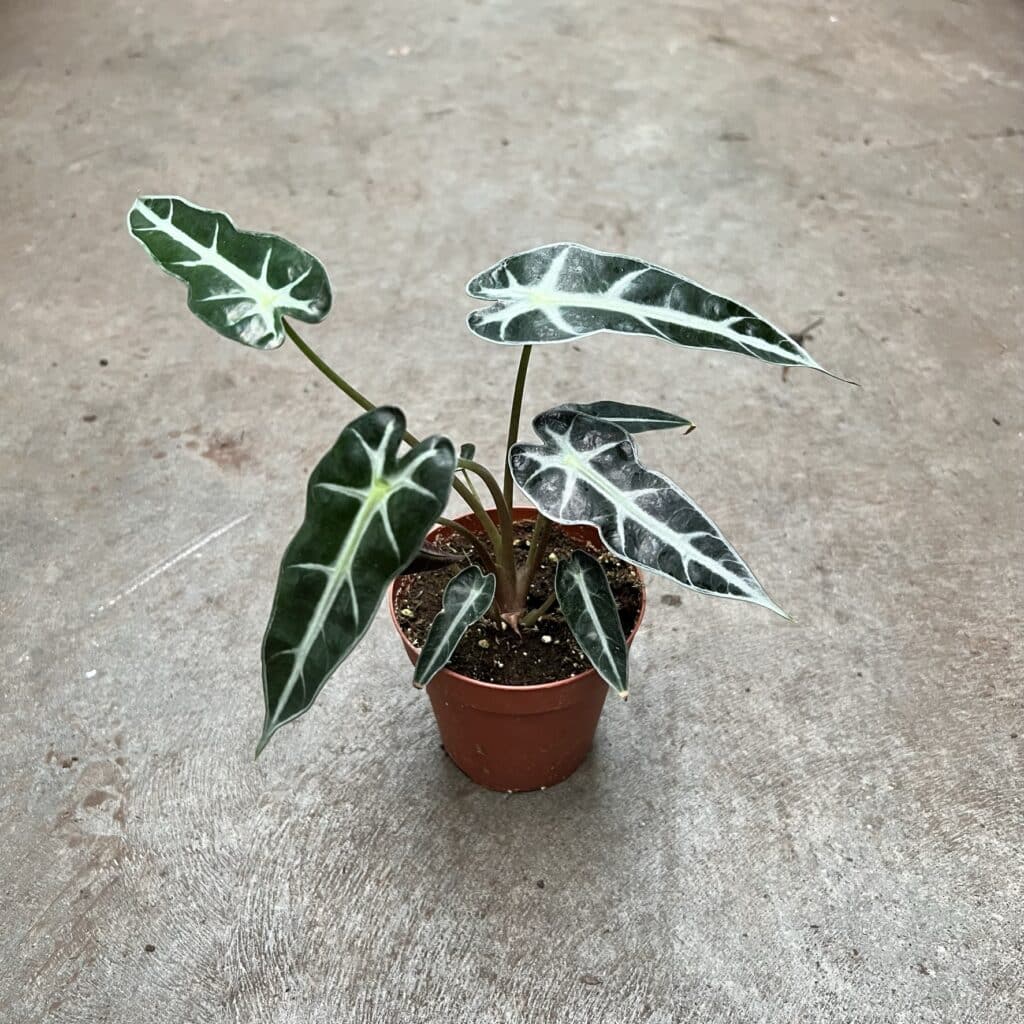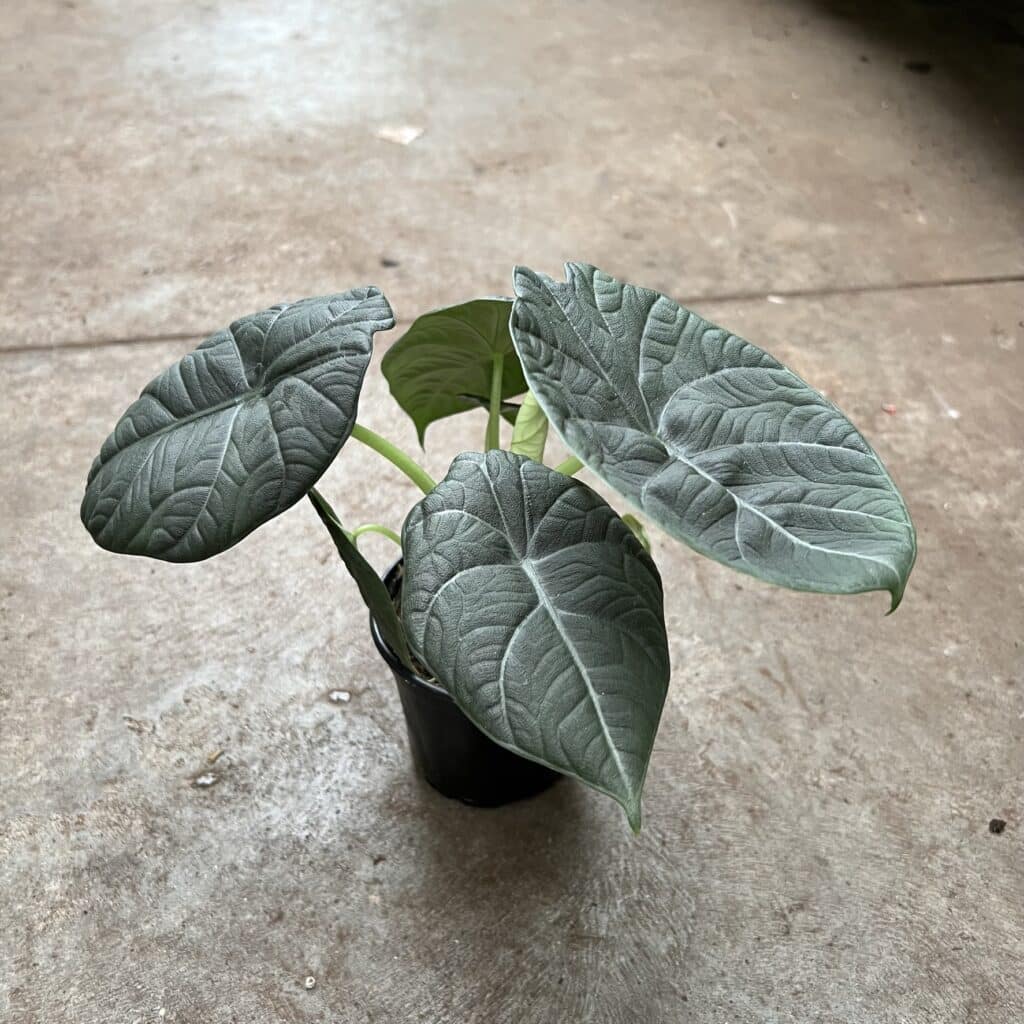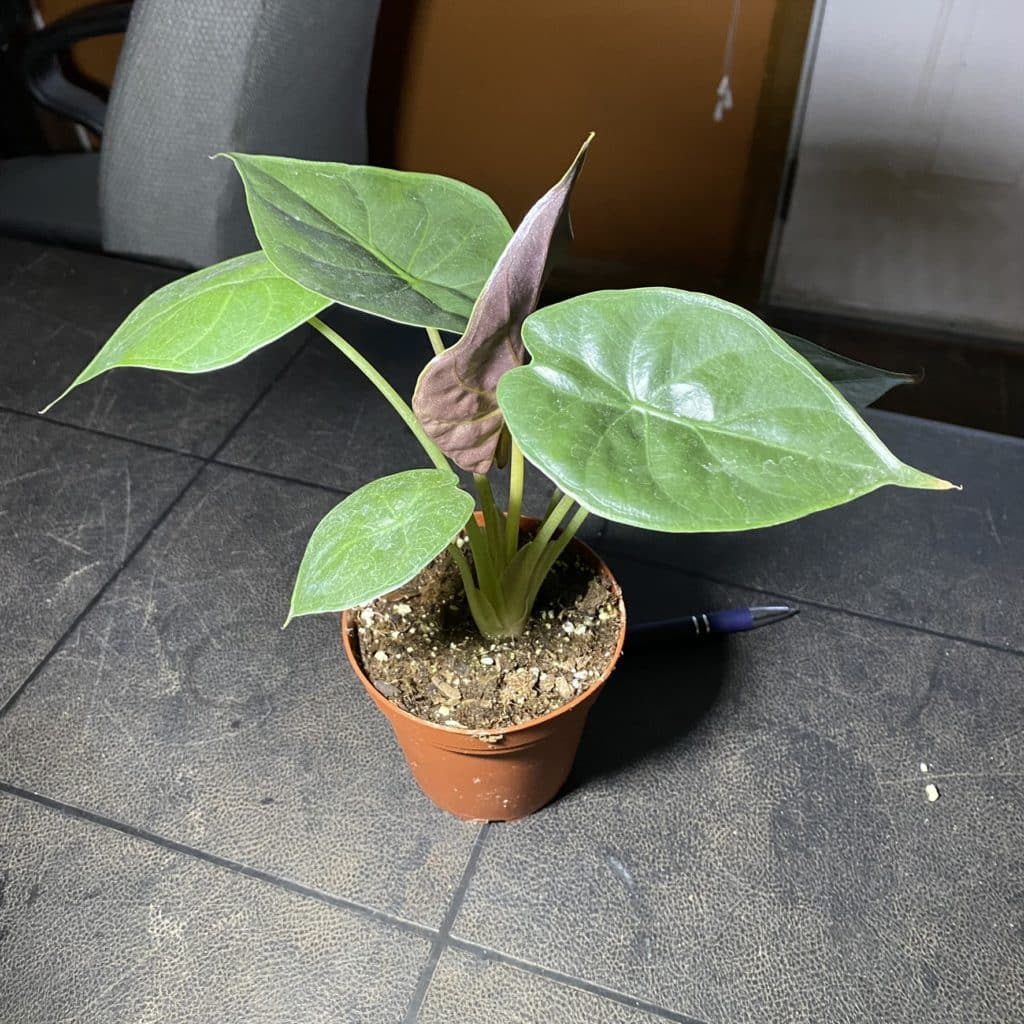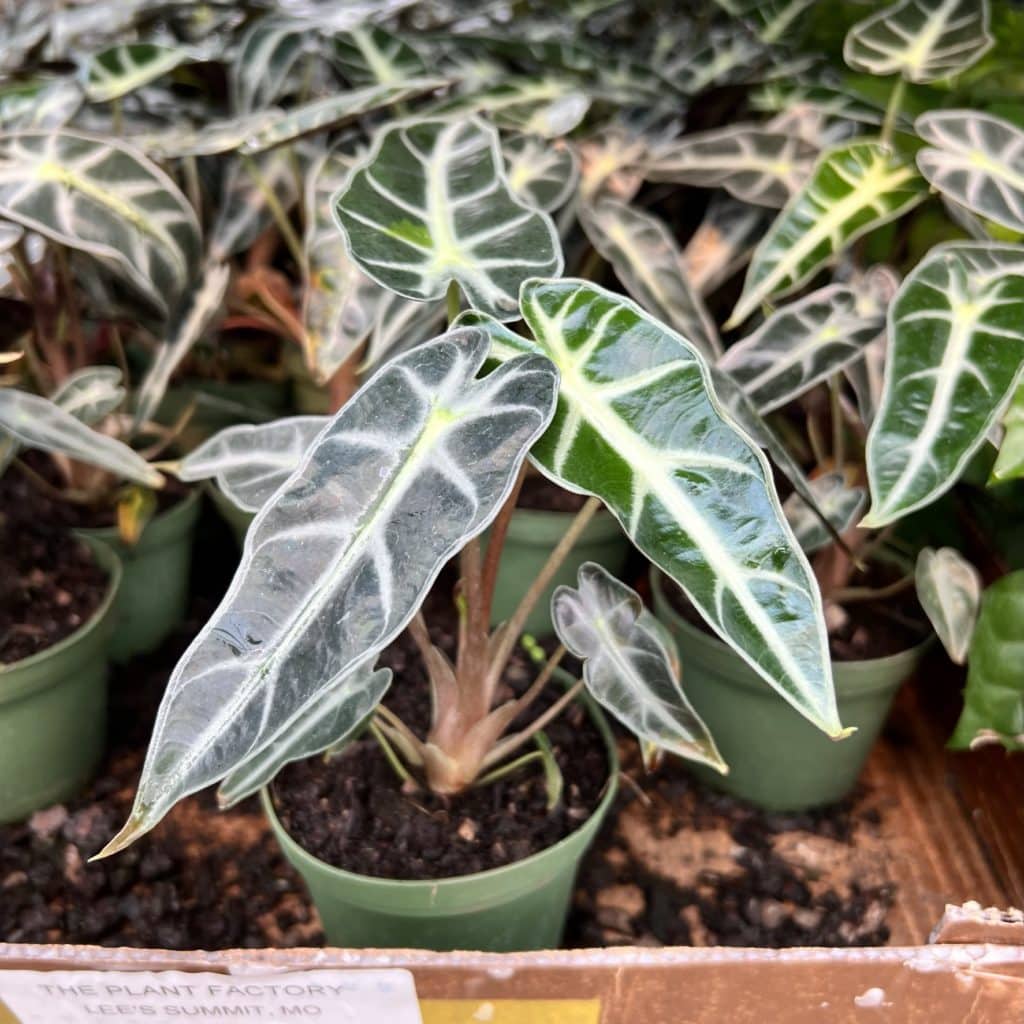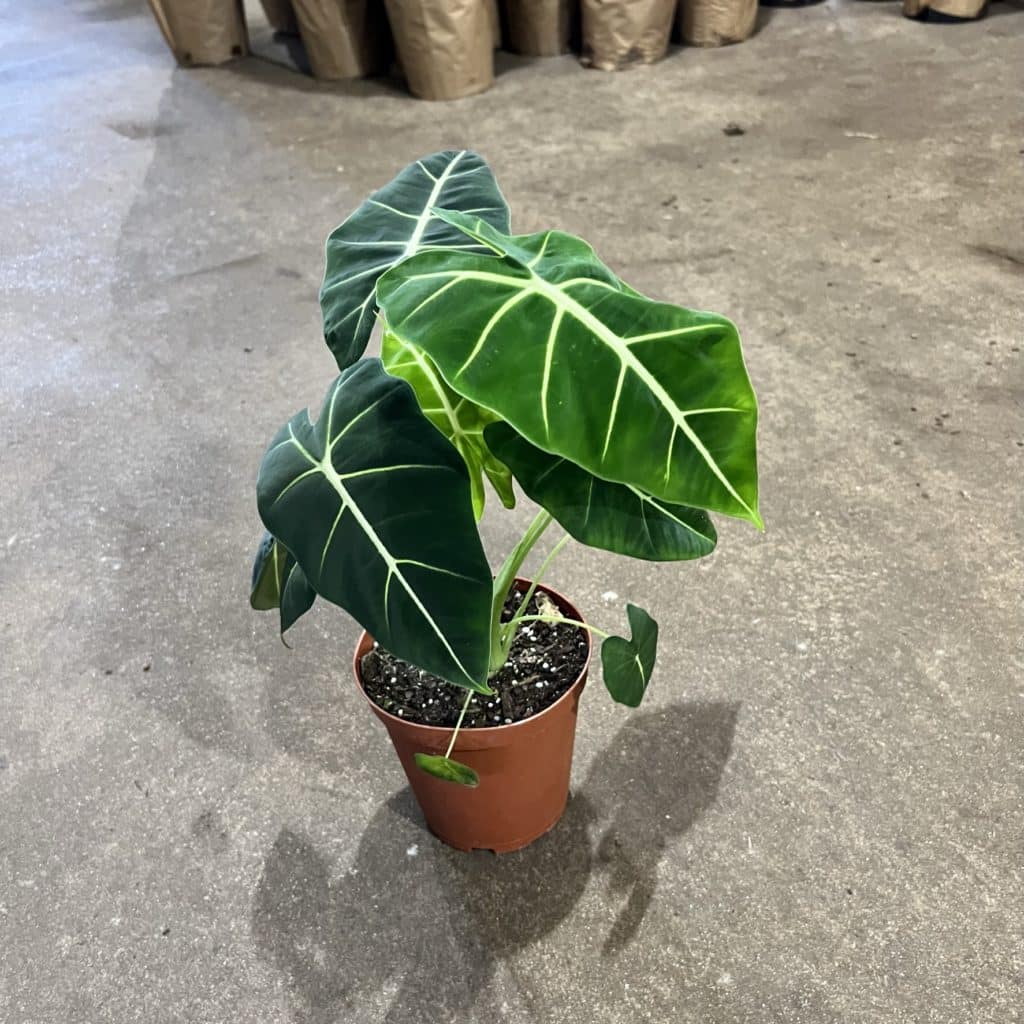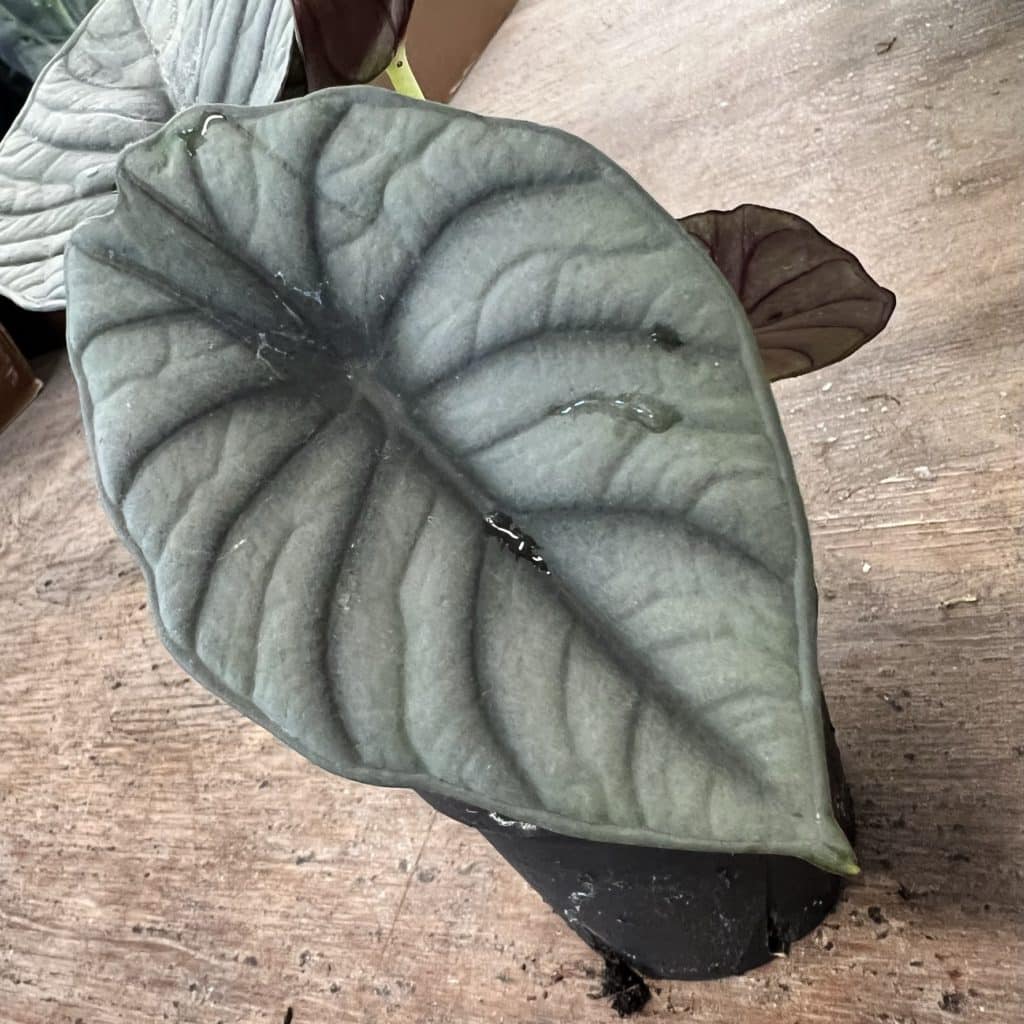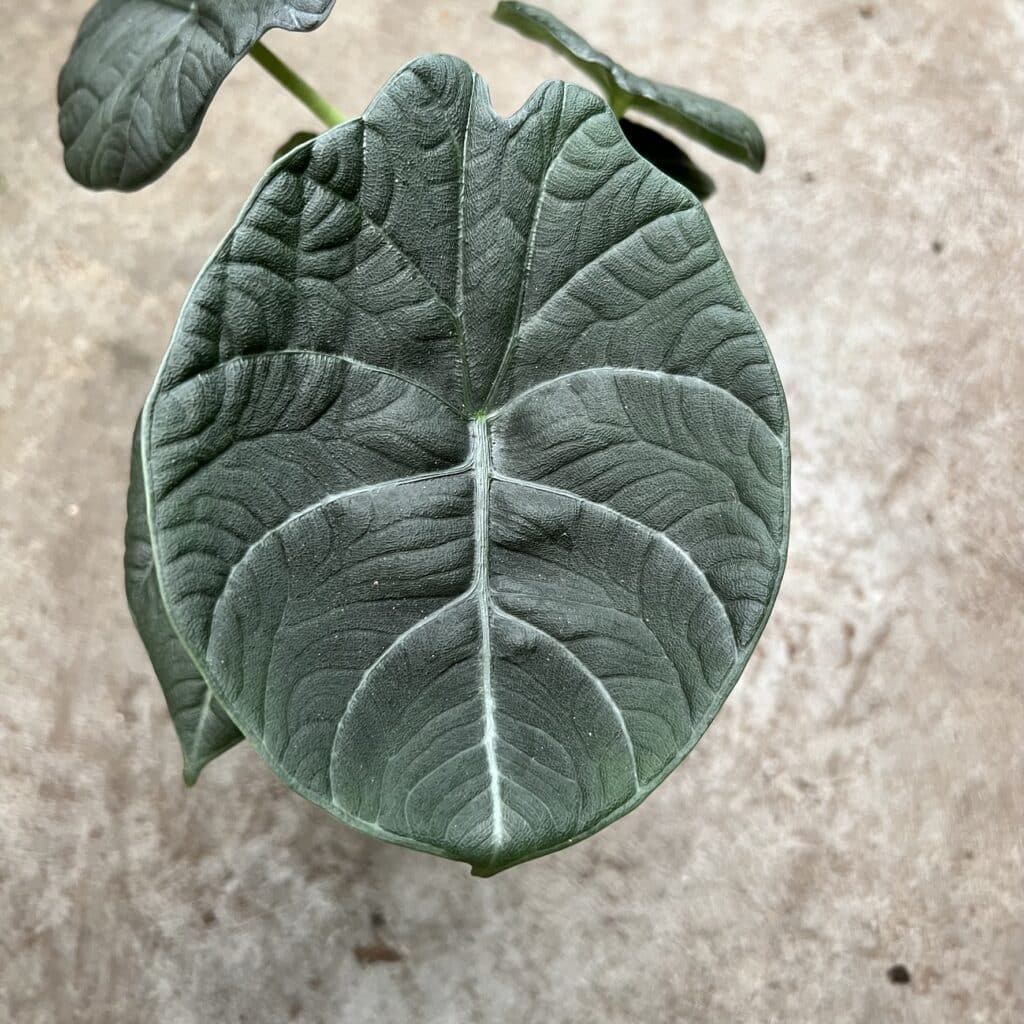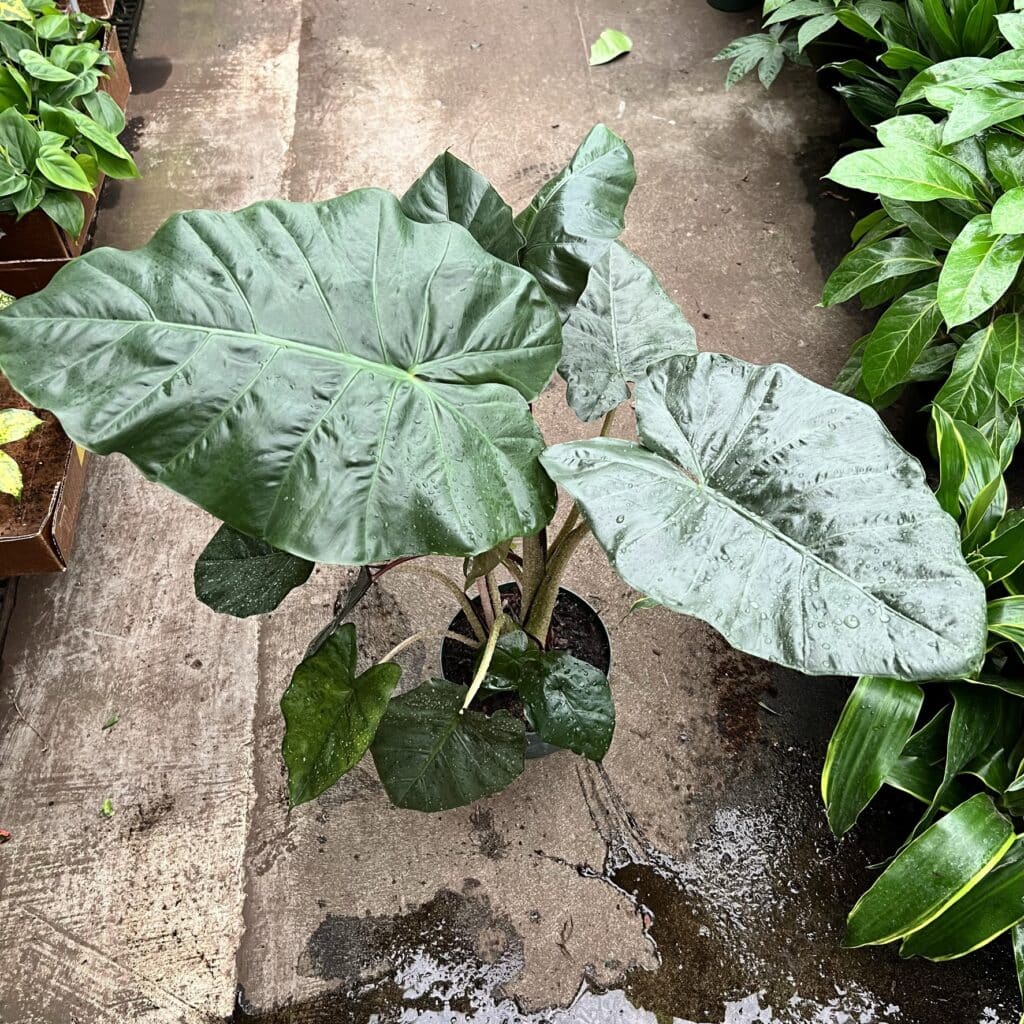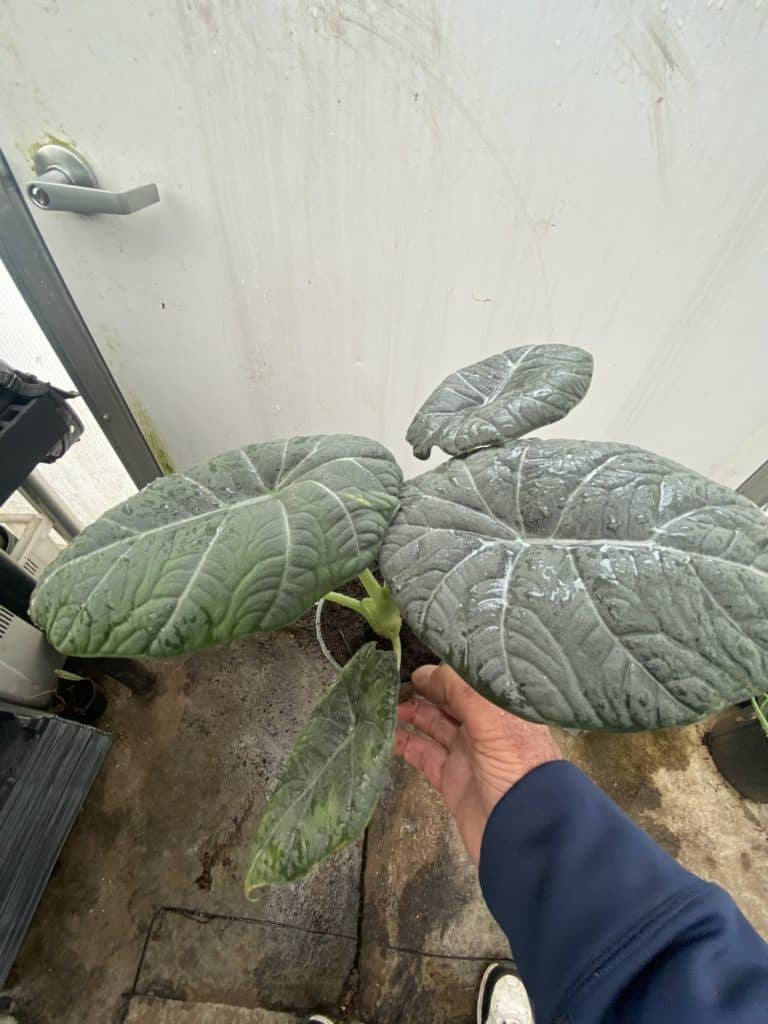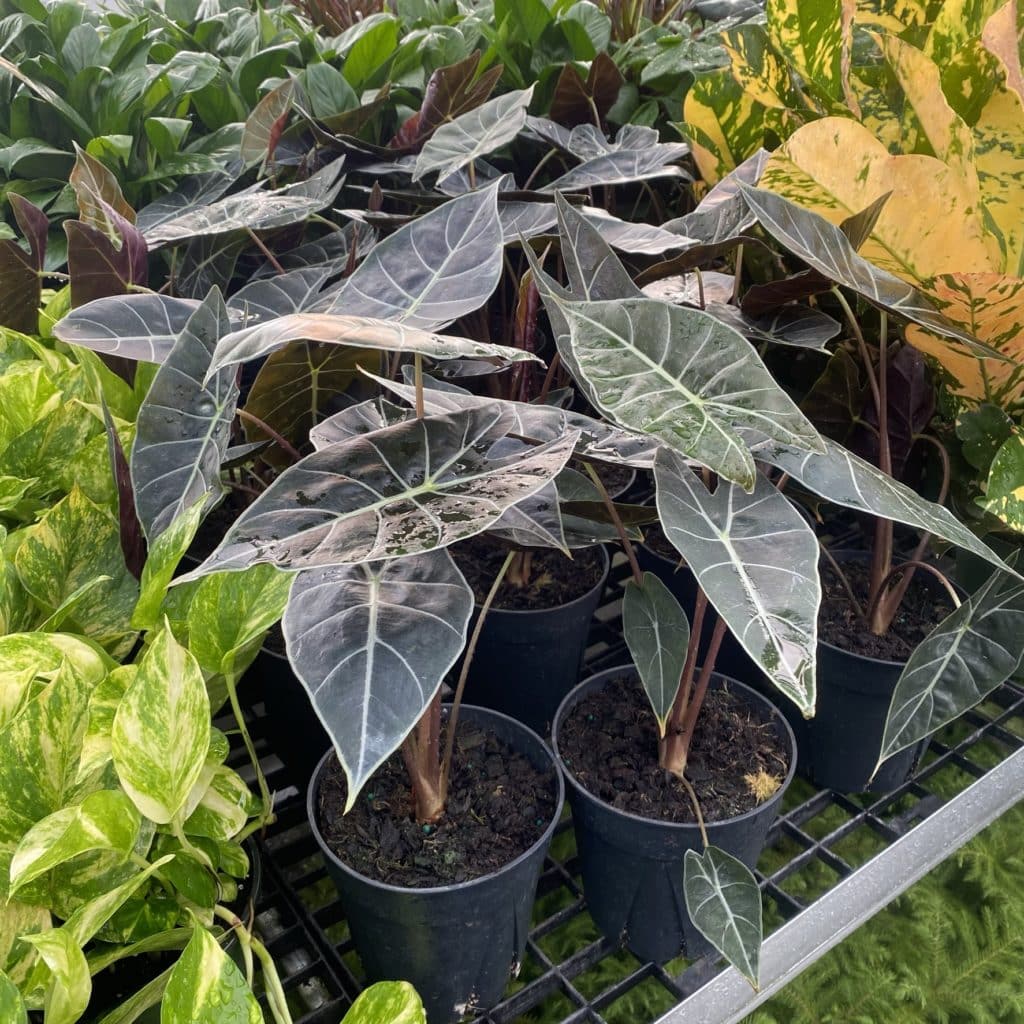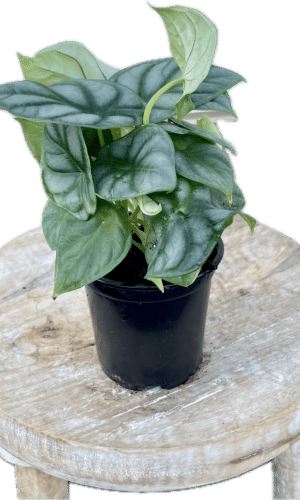An Alocasia plant, native to Asia, is also called an Elephant Ear plant or African Mask plant because of their very large, glossy, heart-shaped leaves with wavy edges. These stunning, veined leaves come in red, bronze, blue-green, and purple. If you are searching for a dramatic, very different looking plant that can be as small as 4″ pot size or as tall as a tree, an Alocasia plant is a great choice. These plants do require extra care and attention. Alocasia plants are considered poisonous and should be kept away from pets and children.
An Alocasia plant requires very bright indirect light but no direct sun.
Allow the top 2″- 3″ of soil to dry out before watering. Try to keep the soil evenly moist. Over-watering, wet leaves, and soggy soil makes an alocasia plant susceptible to a variety of serious fungal infections. Check the soil frequently until you are sure of the plant’s watering needs. Alocasia plants require less water during the winter when it’s dormant.
Alocasia plants prefer warm temperatures between 60°-80°F (15.6°-26.7°C). These plants become dormant with prolonged exposure to temperatures below 60°F (15.6°C) and may drop all of their leaves. Be sure to keep an Alocasia plant away from air conditioners and cold drafts. During warm summer months, an Alocasia can produce a new leaf every week and each new leaf may be twice the size of the previous leaf.
Alocasia plants grow best in high humidity. To increase the humidity, place the plant on a tray filled with pebbles and water. Be sure the plant is sitting on the pebbles and not in the water. You can also increase the humidity by placing a small humidifier near the plant or grouping plants together. Do not mist the plant; misting encourages plant diseases.
Spraying an alocasia with warm soapy water every few weeks helps prevent Mealy Bugs, scale, Aphids, and spider mite problems. It also keeps the large leaves of the plant dust-free. If an Alocasia does become infested, spray with an ultra fine commercial insecticidal oil or Neem Oil. This kills both the pests and their eggs.
When alocasia plants are over-watered or when the leaves are consistently wet, they develop a variety of diseases such as crown, stem, and root rot, leaf spot, and xanthamonas. These diseases usually appear as dark brown or black spots on the leaves, surrounded by a yellowish rim. The best way to prevent plant diseases is to avoid over-watering, keep the leaves dry, and provide good air circulation around the plant. Once an alocasia is infected, quickly remove the damaged leaves and any leaves that have fallen off, isolate the plant from your other plants, and treat with a commercial Fungicide.
An alocasia becomes dormant for several months during the late fall and winter. Don’t be alarmed if it seems to appear “dull” or slows growing during these months.
